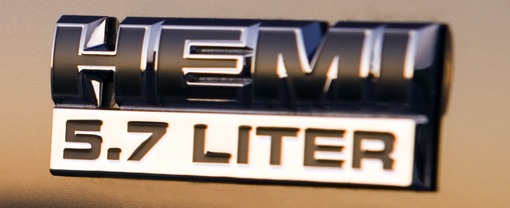Let us run a few engines past you. A warbling flat six. A growling V8. The howl of an inline four changing cam profiles. The smooth buzz of a rotary. How about some names now? Hemi. Vortec. Powerstroke. VTEC. Renesis. Ecoboost.
Noticing a pattern? The first list is clearly engine layouts, and the second are trademarked brand names for particular motors. The similarity amongst them all is that you could probably link every single layout and name with a particular car company, or sometimes even with a particular model. Rotaries for example have been synonymous with Mazda for many years now, and Renesis is their brand name for the engine in the recently discontinued RX-8 sports coupe.
Engines and brand identity

Legendary HEMI not part of Chrysler’s future powertrains
And if the motor does have a name, how do you then define it against the electric motor in any other EV? Its application aside, does the motor in a Tesla hold any more brand identity than the one in a Reva G-Wiz does?
Car companies trade heavily on the image, and indeed the characteristics and sounds of the engines they drop into their vehicles. When you take this image away from electric cars, whose powertrains effectively have no distinguishing features beyond their abilities to move you at a different pace from the next EV, what takes their place?
Identity in EV drivetrains?

BMW Megacity Vehicle official teaser
Nissan have gone a different route though with their air-cooled pack, a move that Tesla CEO Elon Musk has criticized. Apart from anything, Nissan state cost and simplicity as a major reason for going down the air-cooled route - not dissimilar to the cost and simplicity reasons for using air-cooling on motorcycle engines. Perhaps for a while we'll see a divide in the cooling method manufacturers choose.
Some manufacturers choose to use different charge usage too - A LEAF will use 90 percent of its battery pack, a Chevy Volt only 50 percent. Mentioning the Volt too, it's hard not to see how the drivetrain itself isn't a defining feature, some EVs being full battery-electric and others using range extending engines - though of course, the debate still rages whether those deserve to be called electric cars...
As for motors themselves, there is already little to define them beyond the power they output and different types of whine they emit - and comparing the whine of electric motors is like comparing the sound of dozens of generic four-cylinder gasoline engines - there isn't enough of a difference to make one more special than another.
At the advent of EVs requiring sounds to warn pedestrians of a vehicle's presence, there's always the option for manufacturers to create their own distinctive sound to mark out a model or a brand.
Finding pastures new
With a lack of brand identity in an EV's drivetrain then, manufacturers will surely have to look to other areas in which to distinguish their vehicle.
The obvious one, of course, is styling. In the automotive world styling carries more identity even than engines. A kidney grille is unique to BMW, and it's an aspect that will no doubt be carried over to the upcoming MegaCity EV, with their "hoffmeister kink" rear window line surely set to make an appearance too. The car is undoubtably going to carry unique styling though, marking it out as something a little special.

Renault Twizy Concept
It's another possible route for automakers. Some EVs will look fairly similar to regular cars, a trick the 2011 Nissan LEAF pulls off well, looking distinctive yet inoffensive at the same time, not differing too much to regular cars that it'll put off more conservative buyers.
Other makers will be able to make best use of electric vehicles' unique powertrains and the different packaging requirements of motors and batteries to create cars that would be utterly impossible to build as gas or diesel models.
The experience

2011 Nissan Leaf
The Nissan LEAF, like almost any other electric car, has the same sense of undisturbed motion, with no engine noise to intrude nor gearchanges to interrupt progress even slighty. The cabin layout though is subtly different enough too to differentiate it from a car like the Coda Sedan, and no doubt when more and more EVs are released, their general ambience will still be distinctive to the maker that builds them. Manufacturers will be able to tailor the interior depending on the model, too - luxury EVs will approach near silence in the cabin, whilst city cars like the smart electric drive offer you a little more feeling and contact with your surroundings, befitting their intended use.
So to conclude...
At this stage, with so few EVs on sale, it's hard to judge whether the lack of internal combusion means that EVs lack identity. The current production cars stand out for being EVs, and there is little competition between the models requiring any particular brand distinction.
Over the coming decades though, consumers will be presented with greater choice and we may get more of an impression then to whether the batteries and electric motors will come to define the car in the same way a rumbling Hemi or the warble of a Porsche flat-six does, or whether makers will have to try even harder to make their EVs stand out above the rest.
Enough of our thoughts though - what aspects do you think that makers will use to distinguish their EVs from those of any other manufacturer? Is there room for distinctive drivetrains? Leave your thoughts in the comments section below.













